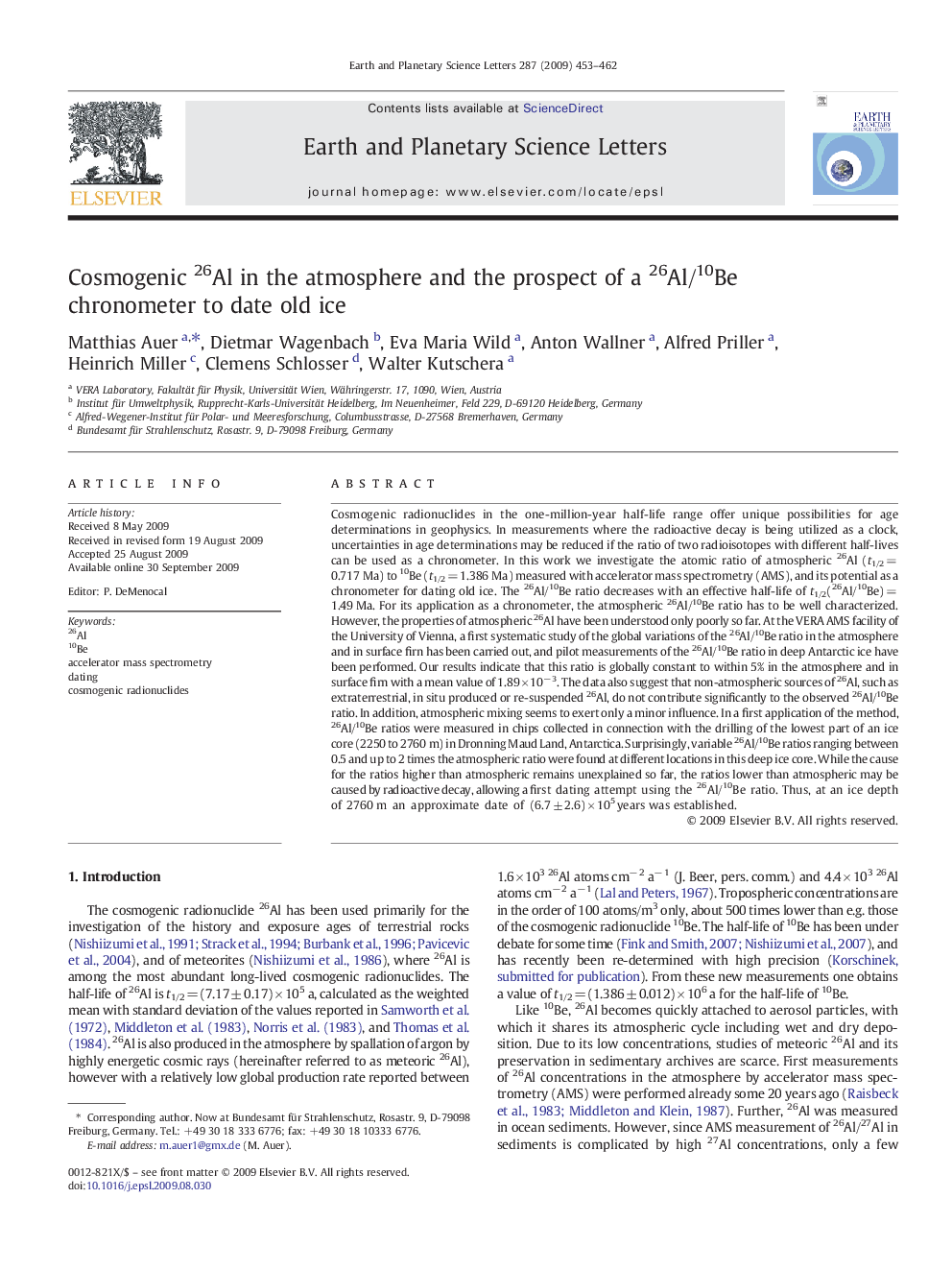| کد مقاله | کد نشریه | سال انتشار | مقاله انگلیسی | نسخه تمام متن |
|---|---|---|---|---|
| 4679060 | 1634864 | 2009 | 10 صفحه PDF | دانلود رایگان |

Cosmogenic radionuclides in the one-million-year half-life range offer unique possibilities for age determinations in geophysics. In measurements where the radioactive decay is being utilized as a clock, uncertainties in age determinations may be reduced if the ratio of two radioisotopes with different half-lives can be used as a chronometer. In this work we investigate the atomic ratio of atmospheric 26Al (t1/2 = 0.717 Ma) to 10Be (t1/2 = 1.386 Ma) measured with accelerator mass spectrometry (AMS), and its potential as a chronometer for dating old ice. The 26Al/10Be ratio decreases with an effective half-life of t1/2(26Al/10Be) = 1.49 Ma. For its application as a chronometer, the atmospheric 26Al/10Be ratio has to be well characterized. However, the properties of atmospheric 26Al have been understood only poorly so far. At the VERA AMS facility of the University of Vienna, a first systematic study of the global variations of the 26Al/10Be ratio in the atmosphere and in surface firn has been carried out, and pilot measurements of the 26Al/10Be ratio in deep Antarctic ice have been performed. Our results indicate that this ratio is globally constant to within 5% in the atmosphere and in surface firn with a mean value of 1.89 × 10− 3. The data also suggest that non-atmospheric sources of 26Al, such as extraterrestrial, in situ produced or re-suspended 26Al, do not contribute significantly to the observed 26Al/10Be ratio. In addition, atmospheric mixing seems to exert only a minor influence. In a first application of the method, 26Al/10Be ratios were measured in chips collected in connection with the drilling of the lowest part of an ice core (2250 to 2760 m) in Dronning Maud Land, Antarctica. Surprisingly, variable 26Al/10Be ratios ranging between 0.5 and up to 2 times the atmospheric ratio were found at different locations in this deep ice core. While the cause for the ratios higher than atmospheric remains unexplained so far, the ratios lower than atmospheric may be caused by radioactive decay, allowing a first dating attempt using the 26Al/10Be ratio. Thus, at an ice depth of 2760 m an approximate date of (6.7 ± 2.6) × 105 years was established.
Journal: Earth and Planetary Science Letters - Volume 287, Issues 3–4, 15 October 2009, Pages 453–462